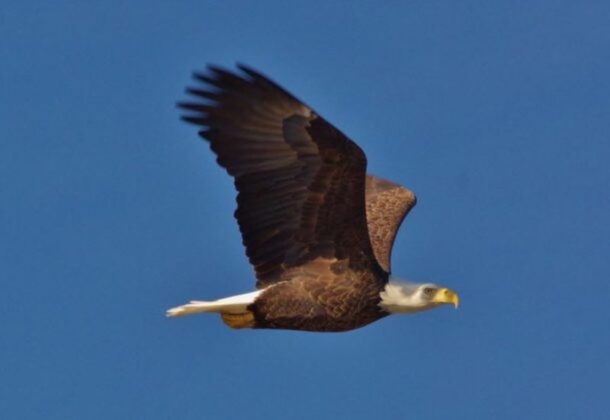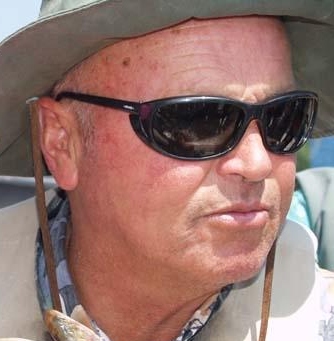Winter in the Chesapeake: Where Are the Ducks?

Photo by Laura Hammett
Message from the Cap’n is a compilation of fishing advice, waterman and weather insights, Chesapeake lore, and ordinary malarkey from the folks who keep their feet wet in the Potomac and St. Mary’s rivers.
From the Interpretive Buoy System: The lower Potomac water temperature is 44 degrees F and the salinity is 14.1 parts per unit as of Sunday — the water temperature is falling and salinity staedy.
It’s the time of year where rafts of ducks fill Island Creek for good eating while the “pop-pop-pop” of hunters out gunning for them suggests others are looking for good eating from them! But this winter has seen few arrivals thus far into the new year and while the duck blinds are showing up on St. George Creek, there’s not much “pop-pop-pop,” because there haven’t been many ducks yet.
Keep your eyes peeled for those listed below, and let me know what you see.
Some of the ducks that visit the lower Potomac and its tributaries in the fall and winter include:
Buffleheads, locally called “dippers,” are usually the first ducks to arrive. They fly like they are in a playful mood. They usually move to our area during November due to the cold weather up North and then move to other areas as the weather dictates.
Common Goldeneye, or “whistler,” is the smartest duck we try to hunt in Southern Maryland. We rarely see them in this area now.
Ruddy, also known as “iron-head,” gets its local name because it is hard to kill.
Scaup, or “black-head,” is usually a visitor after the hunting season goes out. Scaups gather in massive flocks.
Common loon migrate through the Chesapeake Bay in the spring and are great fishers.
Bald eagles are here year-round.
There hasn’t been any shortage of bald eagles, however. They’ve been seen — and heard! — across St. George Island since before Thanksgiving. This is the time in the Chesapeake region couples are preparing their nests. To keep track of their local schedule, follow the Charles County Port Tobacco eagle cam here.
Bald eagles protect about a mile of shoreline or territory. They nest in the winter and have a varied diet. Here is a video of a bald eagle hunting a mallard for dinner.
We see them more in the fall and winter after the osprey have left to overwinter in South America, simply because eagles and ospreys get along like the Hatfields and McCoys. Bald eagles often perch in vacated osprey nests and have been known to take nesting material from those nests and use it in their own nests.
Unlike osprey who eat only fish, eagles hunt fish, other birds, and small mammals. When there are hatchlings, the most successful hunters fill the nest with their prey to feed the young.
An interesting scenario in St. Mary’s County sometimes takes place on fields across from Third Base in Loveville, MD, where a deer processor spreads ground carcasses. Eagles are early risers and are the first to locate the feast. They’re followed by the buzzards who come later in the morning. Just the sound of the grinder alerts the eagles, sometimes drawing as many as 30 eagles feasting early in the morning.
Till next time, remember “It’s Our Bay, Let’s Pass It On.”
Cap’n Jack
To learn about tours and trips into the Chesapeake, keep in touch with Fins + Claws on Facebook . Catch up on Messages from the Cap’n Member Page. Please visit Cap’n Jack’s lore and share with your social media sites. Or reach him here: [email protected]; 240-434-1385.

























Thank you Capt. for your continued insight on and around the island, you have definitely left your skiff mark there. My father if still alive would be enjoying your insights. Jan
thank you